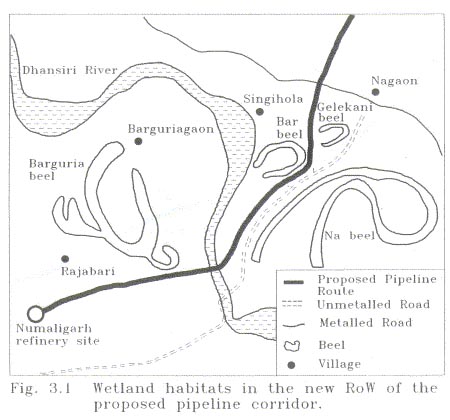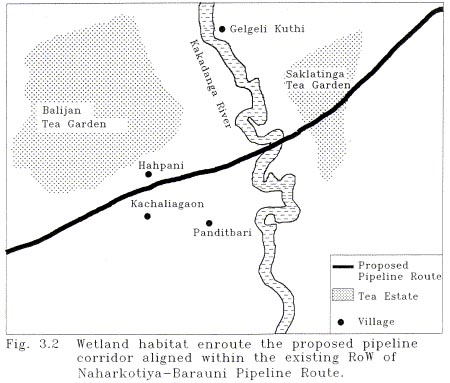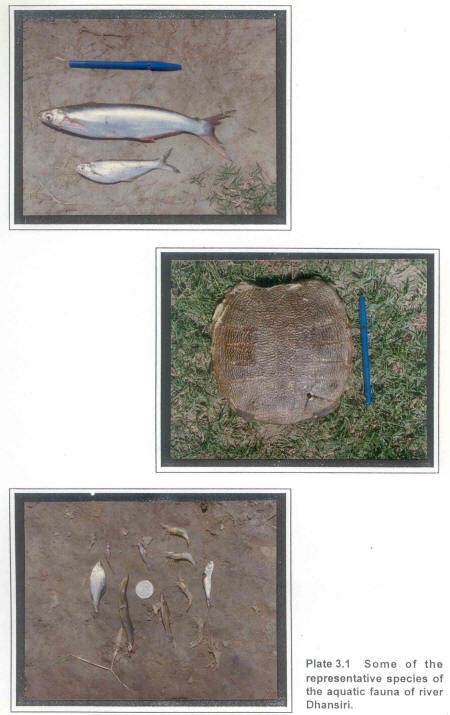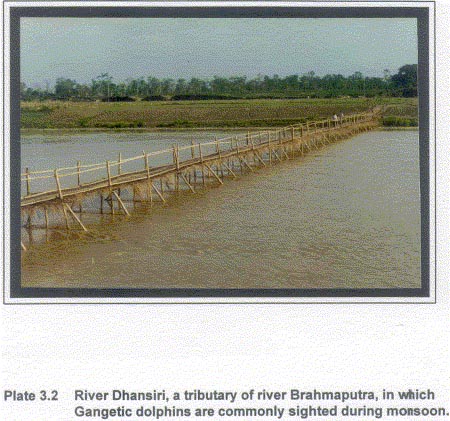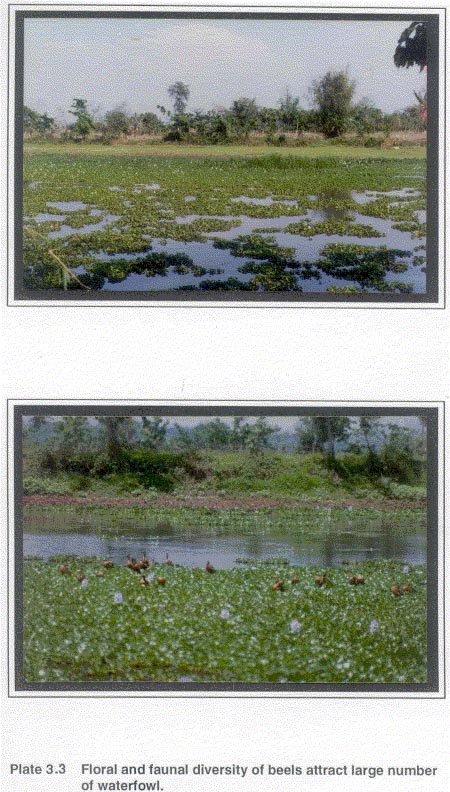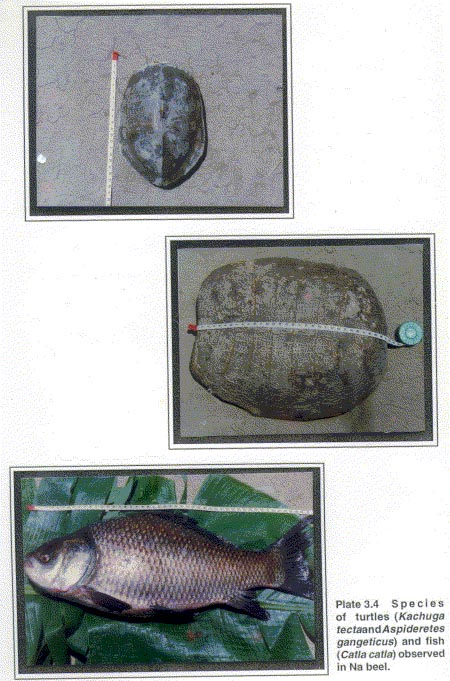Baseline Status
|
The compilation of baseline information of the proposed project environment is the most important step in EIA studies. This is achieved mainly through field studies and secondary data sources. This information describes the status of wildlife values of the project environment prior to the initiation of the project, based on which the magnitude of impacts associated with the various phases of the proposed project such as construction, maintenance and operational phases are anticipated. In this section, the information on floral and faunal status of wetland habitats located en route the proposed project has been presented. 3.1 Status of Wetlands Despite, the values and functions of wetlands, over exploitation of resources, pollution and conversion of these wetlands for other landuses, due to the population pressure, are threatening the existence of most wetland ecosystems. Special emphasis was therefore laid to evaluate the baseline status of the wetlands particularly the river corridors and beels in the stretches of pipeline within the existing and the new RoW (Fig. 3.1 & 3.2).
3.1.1 River Corridor These two river corridors were studied intensively to determine the likely impacts of the proposed pipeline project on their wildlife values. Dhansiri River Corridor The bank areas of the river are used by local villagers for growing paddy. Among the scattered tree species, Casurina equisetifolia is the dominant species. The fish species recorded in the river, through direct observations of fish catch and discussions with the local fishermen, are listed in Table 3.1. Table 3.1 List of fish species recorded in Dhansiri river
The reptilian fauna is represented by a single turtle species namely, Ganges Softshell Turtle (Aspideretes gangeticus) (Plate 3.1).
Discussions with local people revealed that during the monsoon season when the conditions are favourable, two mammalian species, viz: The Gangetic dolphin (Platanista gangetica) (Plate 3.2) and Otter (Lutra sp.) also occur in the stretch of the river that would be traversed by the proposed pipeline. Otters are frequently poached for their skins. These skins are then sold to make caps out of it. Apart from this, fishing and sand mining are the other regular activities of the local villagers.
Kakadanga River Corridor This river corridor was surveyed one km upstream and downstream to collect the information on bank vegetation and the wildlife values of the river. The bank regions of Kakadanga river is dominated mainly by tea gardens and agricultural fields. The fish fauna recorded from this river includes species such as, barali (Wallago attu), baho (Catla catla), magur (Clarias batrachus) and rohu (Labeo rohita). The reptilian fauna is represented by a single species of turtle - Ganges Softshell Turtle (Aspideretes gangeticus). The avifauna of the river included the bird species such as Red wattled lapwing (Vanellus indicus), Little egret (Egretta garzetta), Common sandpiper (Tringa glariola), and White breasted waterhen (Amaurornis phoenicurus). Discussions with local villagers and fishermen revealed that this area does not support any major mammalian species. 3.1.2 Beels With high values of light quality and quantity combined with appropriate temperature regime and total alkalinity, the submerged macrophytes play a major role in determining plankton productivity and primary productivity of beels. The major floral species occurring in these beels are Eichhornia crassipes, Pistia stratiotes, Hydrilla verticillata, Vallisneria spiralis, Lemna minor, Ipomoea reptans, Nymphoea albea, Potamogeton crispus, P. nodosus, etc. Among all these species, water hyacinth (Eichhornia crassipes) is the dominating species at most places. Infestation by water hyacinth has created major problems. Reclamation of land for agriculture and urbanisation, over-exploitation of fishery resources, and pollution from domestic and industrial waste and agricultural run-off are the other biotic pressures that are affecting these beels. These beels are mainly surrounded by human habitations and agricultural fields. The scarce vegetation in the adjacent area consists of species such as Acacia nilotia, Albizzia sp., Acacia occidentalis, Lagerstroemia sp. and Bombax ceiba (WWF-INDIA, 1993). For the present study, two beels - Bar beel and Na beel, that are located within the impact zone of the proposed pipeline project have been studied intensively to evaluate the impacts of the proposed pipeline project on their wildlife values. Based on the "non-tidal hydroperiods" classification of wetlands, both these beels also comes under the "permanently flooded" category. The water covers the land surface throughout the year in all years. Bar Beel The representative floral species of this beel are Eichhornia crassipes, Ipomoea reptans, Nymphoea albea, Trapa sp., etc. The beel is surrounded by agricultural fields. The representative fish fauna of this beel includes, rohu (Labeo rohita), borali (Wallago attu), baho (Catla catla) and magur (Clarias batrachus). The reptilian fauna is represented by a single turtle species viz: Ganges Softshell Turtle (Aspideretes gangeticus). The representative avifauna recorded from this beel area includes, Pheasant tailed jacana (Hydrophasianus chirurgus), Bronze winged jacana (Metopidius indicus), Red wattled lapwing (Vanellus indicus), Lesser whistling teal (Dendrocygna javanica), Little grebe (Tachybaptus ruficollis), Medium egret (Egretta intermedia), Little egret (Egretta garzetta), etc. (Plate 3.3).
There are reports of a single mammalian species i.e. Otter (Lutra sp.). However, this is not a residential species and a small population can be seen only during monsoon season when the conditions are favourable. Illegal poaching of otters for their skin and fishing are the regular activities. Na Beel The floral species recorded from this beel include Eichhornia crassipes, Trapa sp., Nymphoea sp., Lemna sp., etc. One bank of the Na beel is occupied by the human habitation, where as the other bank has been utilised for cultivation and bamboo plantation. The few scattered tree species recorded on the banks of this beel include Albizzia sp., Cassia fistula, Bombax ceiba and Acacia nilotica. Among the fish fauna, baho (Catla catla), barali (Wallago attu), rohu (Labeo rohita), mrigal Cirrhinus mrigala, magur (Clarias batrachus), etc. were recorded. The reptilian fauna is represented by two species of turtles namely, the Ganges Softshell Turtle (Aspideretes gangeticus) and the Indian Sawback Terrapin (Kachuga tecta) (Plate 3.4). Both these species are fairly common.
The avifaunal species recorded in this area include Lesser whistling teal (Dendrocygna javanica), Pheasant tailed jacana (Hydrophasianus chirurgus), Bronze winged jacana (Metopidius indicus), Openbill stork (Anastomus oscitans), Black ibis (Pseudibis papillosa), Lesser adjutant stork (Leptoptilos javanicus), Little egret (Egretta garzetta), and Little grebe Tachybaptus ruficollis). Discussions with local people indicated that Na beel area does not support any major mammalian species. |
Last Updated: October 8, 2015


